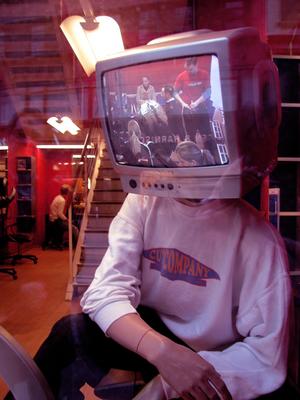Robotics is a rewarding hobby has come a long way since the first days of transistors and diodes. Readily available robot kits can do everything from follow a bouncing ball to kicking a soccer goal. These kits provide limited modification though, and many of us want to make our own robot from scratch. The most important part of building our own robot is designing and building circuit boards. Circuit boards are the electronic components that form the “brains” of our robot. The circuit board (or PCB) connects all of the robot components together and controls everything our robot does. With a little time and patience, printed circuit boards can easily be made at home.
The first step in creating PCB’s is to lay out our circuit design using PCB design software or a CAD program. This software is can be obtained online for free. The circuit layout should include all the traces and pads needed for your circuit to work. You may need to create a mirror image of your circuit layout depending on the type of components used to control your robot.
Print the layout onto toner transfer paper or glossy photo paper using a laser printer. Inkjet printers cannot be used. They do not allow the ink to transfer correctly to the PCB. If you do not have access to a laser printer, your local copy center may be able to print it for you. Adjust the printer settings to so the layout is printed as dark as possible. This “mask” is what you will use to make your PCB.
You will now need to cut a piece of copper clad board big enough to fit the whole circuit layout including enough room for all the components. This can be done with a hacksaw or cutting shears. The board should be lightly sanded with 400 to 600-grit sandpaper and cleaned thoroughly with acetone. This will help remove any residue left on the board from the manufacturer.
Place the mask over the board and cover it with a paper towel. Using a cloths iron set to its highest setting, iron the paper towel just as you would a pair of jeans. Apply steady pressure and move the iron back and forth to ensure the whole board is heated. This typically takes two to three minutes in order to completely transfer the mask to the board. You will know when the transfer is complete by checking the transfer by pulling off the corner of the mask seeing if the ink is fully transferred to the board. Once the ink is transferred, stop ironing. Allow the board to cool before handling it.
Place the board into a container of PCB etch solution you can purchase online. The board will need to remain in the solution until all uncovered copper has been removed. This could take between 10 to 30 minutes depending on which type of solution is used. Once complete, remove the board from the solution. The board will now need to be cleaned with acetone.
The last operation required is to drill all the holes for your components. This can be done with a high-speed rotary tool or drill press. The bit size will be determined by the size of the leads of the components you use. Once this is complete, you can begin soldering the components onto the board, wire up your robot, and enjoy your hi-tech creation.





